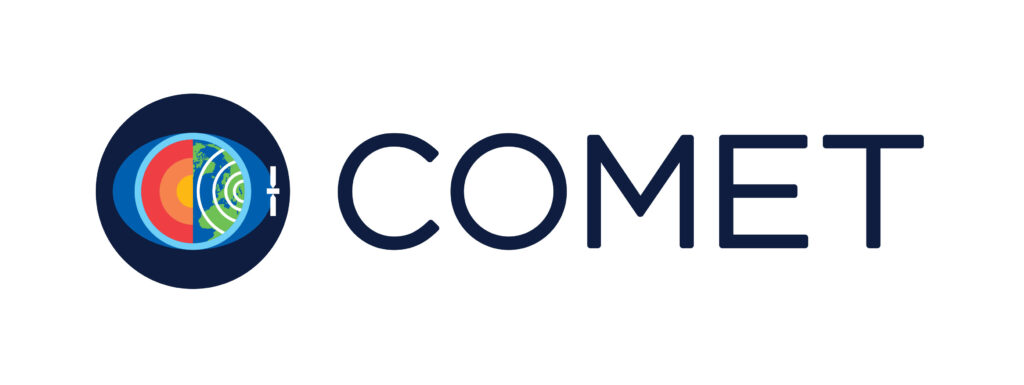2002–2008
The UK Centre for Observation and Modelling of Earthquakes, Volcanoes and Tectonics (COMET) was founded in 2002 with funding from the UK’s Natural Environment Research Council (NERC). Led by the University of Oxford, COMET began as the Centre for the Observation and Modelling of Earthquakes and Tectonics, a collaborative project between Oxford, the University of Cambridge and University College London (UCL) that used satellite observations to help quantify seismic hazard.

Over time, COMET expanded to become a national community of practice and Centre of Excellence. The recipient of ongoing National Capability funding from NERC, COMET started to develop long-term underpinning Earth Observation datasets for use by the international scientific community, while providing expert advice to policymakers in the UK and around the globe.
2008-2014
Rapidly establishing itself as a leading centre for the integrated exploitation of Earth Observation, ground-based data, and geophysical models for research into geohazards, COMET expanded its remit and reach.
From 2008-2014, COMET formed a theme within the National Centre for Earth Observation (NCEO), providing expertise and a strategic focus on geohazard research.
Although COMET started with a focus on seismic hazards, its expansion into volcanic hazards and magmatism was formally recognised with a change of name to The Centre for the Observation and Modelling of Earthquakes, Volcanoes and Tectonics (COMET+) in 2009.

COMET+ then represented the broader the Dynamic Earth and Geohazards research group within NCEO and involved scientists from the University of Oxford, University of Cambridge, University of Leeds, University of Glasgow, University of Reading and University College London.
The aim of COMET+ was to “combine satellite observations of Earth’s surface movements, topography and gas release with terrestrial observations and modelling to advance understanding of the earthquake cycle, continental deformation and volcanic eruptions, and to quantify seismic and volcanic hazards.”
In 2014, the + was dropped from the COMET brand, but the focus on volcanoes has remained.
2014-2019
In recognition of the strategic overlaps with the British Geological Survey (BGS), science drivers, and the potential for a productive, high-impact partnership, COMET became an independent centre in 2014, reporting to and overseen by BGS.

From 2014-2019, COMET strengthened existing links and increased collaborations with the BGS.
In 2018, COMET was awarded the Royal Astronomical Society’s group achievement award in recognition of its unique and long-term contributions.
2019-present
Following a 2-year transition period from 2019-2021, COMET is now delivered in partnership with BGS as part of its long-term National Capability programme of work, funded by NERC.
We still work closely with NCEO as well as many other national and international partners, including the European Space Agency (ESA), Met Office, and National Centre for Atmospheric Science (NCAS). See our Key Collaborations page for more information.
Our work with business, Government and space agencies also helps to ensure that the UK continues to invest in and benefit from satellite missions.
To read more about our work in the present, see the COMET Our Organisation and Science pages.
